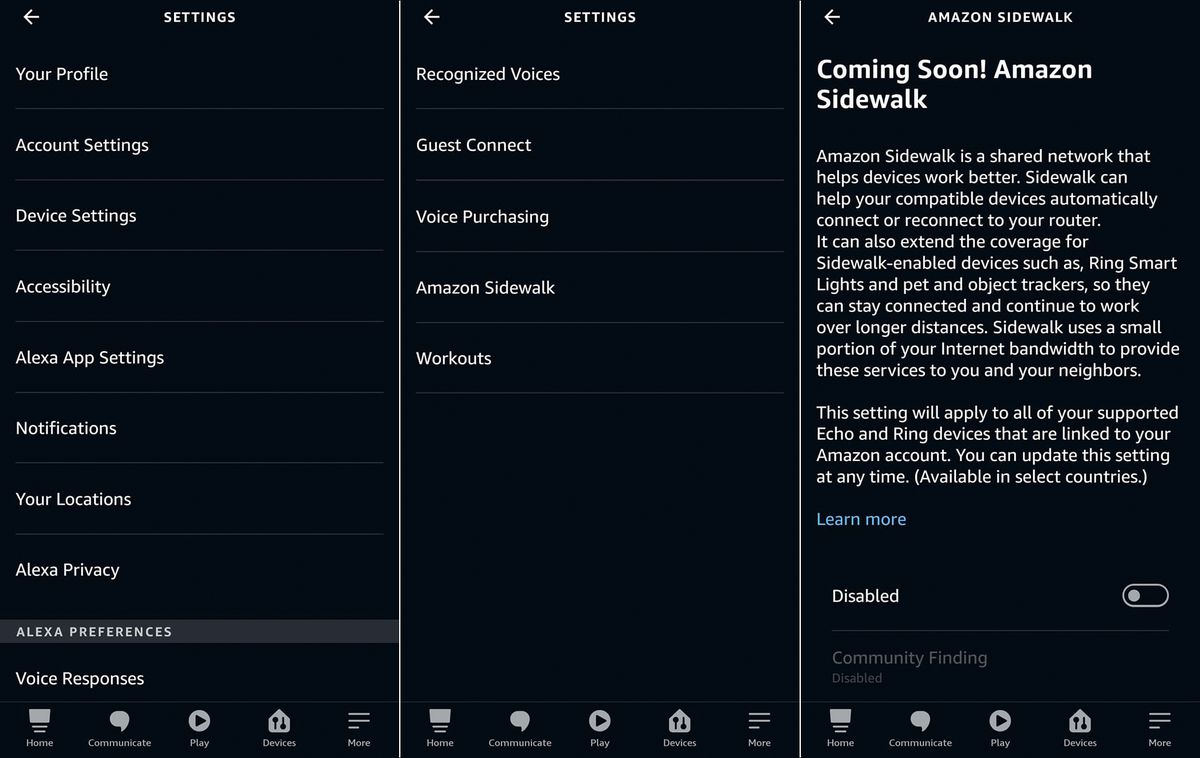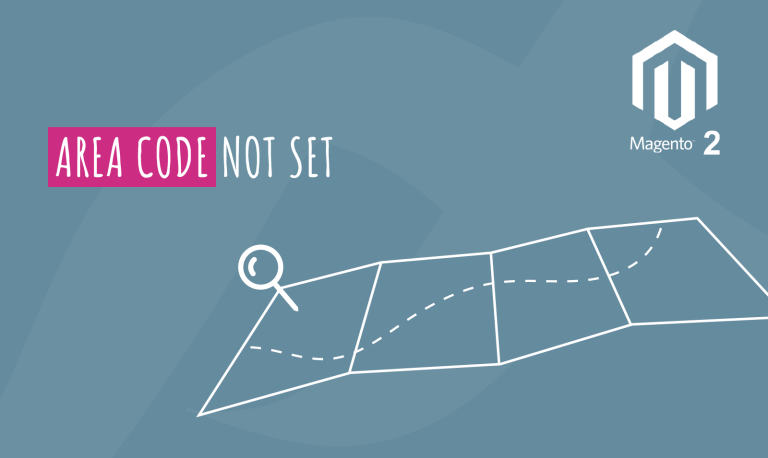Whether you want it or not, Amazon’s new Sidewalk service is coming soon. Starting Tuesday, Amazon’s internet-sharing network will be activated on millions of Amazon Echo and Tile devices. But if you don’t want it, there is a way to opt out. Here’s what you should know before you make your decision.
First things first: Sidewalk is Amazon’s effort to create a “mesh” network of interconnected devices — its own, as well as those made by any participating third parties. Sidewalk-enabled devices — of which there are about to be a lot more — connect to each other through Bluetooth and radio frequencies. Your devices are connected to all other Sidewalk-enabled devices within range (and those devices’ internet connections), which are connected to all other Sidewalk-enabled devices in their range, and so on. This allows all of those devices to stay connected to the internet even if the devices themselves are out of range or disconnected from their home wifi networks. That also means your neighbors’ data passes through your device, and your data passes through theirs. You’ll be sharing a small amount of your internet bandwidth with your neighbors, and they’ll be sharing theirs with you — unless you go through the effort to turn it off.
Sidewalk has been available for Ring Spotlight and Floodlight cameras since late last year, but now Amazon will vastly expand the service (and, therefore, the network it creates) to include many, many more devices: most Echos, Echo Dots, Echo Pluses, Echo Shows, Echo Spots, Echo Studios, Echo Inputs, and Echo Flexes will turn on Sidewalk on June 8 (some older models aren’t Sidewalk-compatible). Newer Tile trackers — as well as devices that have Tile built in — will turn on June 14. Level smart locks have been able to connect to certain Ring video doorbells through Sidewalk since the end of May.
And there will likely be more to come: Amazon is actively soliciting developers to add Sidewalk capabilities to their devices. The more devices that have Sidewalk enabled, the bigger and better the network will be — which is why Amazon has taken measures to ensure as many devices are on the network as possible. That also means we don’t know everything that Amazon can and will ultimately use Sidewalk for.
“If this service is not providing you additional functionality you need, it certainly seems like this should be off,” Northeastern University associate professor of computer science David Choffnes told Recode. “Because there is only the potential for information to be shared above and beyond what there is today.”
Before we get into why and how you can turn Sidewalk off, let’s talk about its potential benefits. If your internet goes down and you have Sidewalk enabled, your Ring security cameras can still send you security alerts (but not video; those files are too large). Amazon has promoted Sidewalk as being useful for finding a lost pet or even a lost person — Careband, a wearable locator for people with dementia, recently announced that it’s working with Amazon to see how it can use Sidewalk. If you have Tile, Sidewalk will almost surely increase its effectiveness, as the network of devices that can help locate your Tile will be greatly expanded.
It’s worth noting that Amazon isn’t the only company doing something like this. Apple’s “Find My” network crowdsources all Apple devices that have Find My enabled to track not just lost iPhones and MacBooks, but also, now, AirTags and even some third-party devices using Bluetooth. The AirTags, especially, have raised concerns that they can be used for stalking people if they’re surreptitiously slipped into, say, a person’s car or purse. And while you can take yourself out of Apple’s global Find My network, doing so means losing the ability to track your own devices through it. And that means if you lose your iPhone or MacBook, Find My isn’t going to help you get it back. That’s a major disincentive.
Amazon says Sidewalk uses a minimal amount of your devices’ power and your internet bandwidth to do its job — 500 MB a month, maximum. If you’re on a metered data plan, though, that might be more data than you’re willing (or can afford) to provide. In terms of privacy and security, Amazon also says that it has taken all available measures to encrypt and secure your data. Your neighbor does not have access to, say, a live Ring video of your bedroom. In fact, your neighbor won’t know that your data is being routed through their devices at all. Oh, and, data consumption notwithstanding, Sidewalk is free.
Sidewalk’s red flags
Even so, you may not feel all that comfortable with the idea of your data going through your neighbor’s network or devices, or maybe you don’t want to share even a minimal amount of bandwidth with them. Maybe you don’t have much faith in Amazon’s privacy protections. You might be okay with having an Amazon smart speaker listening to you in your home, but being part of Amazon’s mesh network is a bridge too far.
Or maybe, like some privacy experts and academics, you find the opt-out “option” to be troubling, or wonder what use Amazon might have for this free service beyond what’s being advertised.
“Despite all the controls they have in place — and there’s some good controls there … It should not be turned on by default,” Choffnes said. “I think most people won’t understand what this thing is, and may just go ahead with the default because they don’t know otherwise.”
An Amazon spokesperson told Recode that the decision to make the service opt-out was “to make it easy for [customers] to take advantage of benefits, such as more reliable connections, extended working range for their devices, easier troubleshooting, and no additional connectivity costs to customers.”
But it’s to Amazon’s benefit to have as many people as possible connected, and it knows that people are much less likely to opt out of something that’s on by default.
“If you can’t provide a compelling reason for everybody to opt in, and then your solution to that is to make it opt out — that’s a red flag,” Choffnes said.
Pardis Emami-Naeini, who researches Internet of Things security and privacy, told Recode that she was also concerned that Sidewalk and its on-by-default model would make people more comfortable with sharing their data than they already are. And, she noted, we still don’t know how Amazon will use Sidewalk and whatever data it gets from it, in the immediate or the distant future.
“It’s usually the case that, currently, they might not have a good use case for this,” she said. “But then later, they would find some really good use cases for the data, and then they would just benefit from it. And then they would increase the scale.”
Here’s how to opt out, since you were automatically opted in
So, if you do want to opt out of Sidewalk, it’s simple enough. For Echo devices, you’ll open the Alexa app, then Settings > Account Settings > Amazon Sidewalk > Disabled

You can also keep Sidewalk enabled but opt out of the “community finding” tool that is used for Tile by disabling Community Finding in the Amazon Sidewalk section.
To disable Sidewalk through your Ring app, go to the Control Center > Amazon Sidewalk > Disabled > Confirm
If you have both devices and apps, you should probably opt out through both just to make sure. And you can always opt back into Sidewalk if you so choose. But you will be making that choice, rather than Amazon doing it for you when you weren’t paying attention.






